Transform Your Space: 5 Expert Tips for Decorating Like a Pro

Hi friends, my name is Jennifer. I've been a designer for over 20 years, and today I'm going to give you five tips on how to decorate like an interior designer. So, let's get started!
Whether you're starting from scratch or looking to refresh your home, mastering the art of interior decorating can seem like a daunting task.
In today's video, we're diving into the world of interior design, and I'll be sharing five practical tips that will have your home looking like it's straight out of a magazine.
So grab a pen and paper because, by the end of this video, you'll be armed with the knowledge to decorate with confidence and style.
Table of contents
Redesign Recommends!
Number One: Lighting
Choosing lighting is crucial in interior design as it significantly impacts the ambiance, functionality, and overall aesthetics of a space. When possible, I recommend replacing builder-grade light fixtures with more unique selections to immediately elevate a space.
Builders often choose fixtures that are cheaper and plain to provide the homeowner with a fixture that can go with any decor style. So, builder-grade fixtures rarely have any character or charm to them.
By selecting a new fixture that leans more toward your personal decor style, you'll give your home a custom-designed look. You don't have to spend a lot of money on a light fixture for this strategy to work; even Amazon and Target have great options. Just make sure you don't go too small, as an undersized fixture will put the space off balance.
Another incredibly important aspect of lighting is layering. Lighting has a direct correlation with emotions.
Consider how overhead lighting makes you feel—it can be jarring and sterile, causing harsh contrast in the space.
Now, think about when you turn on lamps—it feels much better, softer, warmer, and more inviting. I recommend having a minimum of three lamps in a space, but depending on the size of the room, you could do more.
A great tip to enhance your space is to select the right light bulb. This is so important! I highly recommend selecting warm light bulbs instead of cool white. Cool white bulbs can make your home feel like a doctor's office rather than a welcoming and warm home. So, my recommendation is to select bulbs that are 3500 Kelvin.
Number Two: Use the Rule of Three
Balance is so important when decorating your home. So, what is the rule of three? In a nutshell, the rule of three suggests that things grouped in three are more natural, harmonious, and visually appealing. But wait, I thought balance means symmetry? Well, yes and no. You can have balance with symmetry and asymmetry.
For instance, and this is a very simple example, but let's say you have a sideboard in your dining room space. You have two lamps on each side and a floral arrangement in the middle—that is beautifully balanced.
When styling shelves, mantels, or tabletops, designers often group objects in threes. For example, placing three vases of different heights together or three decorative objects with varying textures can create a visually appealing arrangement.
I recommend using this rule in wall decor as well. Let's say you have a large wall above your sofa—you could use three mirrors with the middle one raised just a little bit higher to draw the eye up. This is a wonderful way to use the rule of three.
You could also select a large piece of artwork and then put two sconces on either side of the art. Do you see how that makes it feel more complete? So, when in doubt, use the rule of three. There are always exceptions, but this rule is a great way to minimize over-accessorizing and reduce that cluttered feeling. By arranging items in groups of three, designers avoid a symmetrical and static look, which can feel too formal or predictable. In essence, the rule of three is a versatile guideline that interior designers use to bring harmony, balance, and visual interest to a room.
Number Three: Use Properly Scaled Decor
Using properly scaled decor is essential in interior design to ensure that furnishings and decorative elements harmonize with the size and proportions of a room. Often, people are afraid to go large with their decor items or furniture. They choose art that is way under scale, hang their drapes too low, and choose lamps that are too small. It's a very common theme when I go to see clients for the first time. But it goes back to the balance we talked about with the rule of three. It's very important to create proper balance to give your home that designer feel.
Be careful when selecting items for a room. A room with all small-scale furniture can feel cluttered, while an oversized piece in a small room can dominate the space. When choosing furniture, think about the space—is all the weight in the bottom half of the room? Then you may need to consider a large bookcase or heavier wall decor to draw the eyes up and balance the space.
Don't be afraid to do this, especially with something like bookcases. A unique bookcase not only balances the weight of the room but can give a custom feel to the space as well. Plus, it gives the opportunity for accessorizing with personal items you love.
Go large with your wall decor as well. It's incredibly common for people to select wall decor that is way too small, and that can make a space feel very incomplete or aimless.
Designers select larger wall decor items because it fills the wall up and eliminates those blank, boring spaces of wall.
So consider upscaling your wall decor to give a more luxurious designer look. By paying attention to scale and proportion, interior designers ensure that every element within a room contributes to a cohesive and harmonious design. It's about striking the right balance between functionality, aesthetics, and the unique characteristics of the space.
Number Four: Cohesive Color Palette
Choosing a color scheme is a fundamental aspect of interior design that sets the tone, enhances the atmosphere, and ties together the overall look of a space. For a truly designer look, mix patterns and colors but keep them cohesive.
A great rule of thumb is that your palette throughout the space should never be matchy-matchy but always coordinate. This should actually give you some freedom rather than needing to perfectly match every pillow, drape, and rug. You want them to go well together. This means you need to plan out your color scheme, but we will get to more of the planning in tip number five.
So, how do you do this? First, you need to select your color palette. Maybe your space is already painted, or you already have a piece of furniture or textile you need to work with. Well, Pinterest is a fantastic tool for those who struggle with coming up with cohesive colors. Just search "blue color palette" or "neutral color palette," and there are thousands of beautiful examples of colors and patterns that work well together. Pinterest can work as great inspiration for landing on a cohesive color scheme.
Along these lines, don't be afraid to mix patterns. This is a great strategy of a good designer. For instance, stripes go wonderfully with organic patterns. Incorporate texture and patterns throughout fabrics, rugs, and accessories to add depth and interest to the color scheme.
Mix different textures to prevent monotony and enhance visual appeal. You can mix contrasting patterns and colors in a way that feels intentional, preventing a space from feeling too plain but rather designed with a professional eye. Ultimately, the color scheme should reflect your personal style and preferences. Don't hesitate to experiment with different combinations until you find the one that resonates with you and complements your space.
Number Five: Pay Attention to the Details and Plan Them Well
The key to a great design is the details, and rarely do they just fall into place. They need to be intentionally planned and chosen. Planning the details of a design is a crucial step for interior designers to ensure that every aspect of a space contributes to its functionality, aesthetics, and overall ambiance.
I highly recommend using a tool like Canva to make a mood board. What is a mood board? Very simply put, it's a collage of images that showcase a planned project. I use mood boards every single day to show clients my plans for their space, and it's a truly vital tool to ensure a design comes together. In a mood board, you can arrange images of items you want to use in your design and really see how they'll look together. Play with your designs in Canva and pay attention to the details, like the fringe of a pillow tying into the fringe of a chair, or the light blue of the drapes coordinating with the blue in the artwork or the rug. Do not overlook the details—they can make or break a good design. So, create a mood board in whatever platform you prefer and take your time planning out your space. This will also help you avoid buying things unnecessarily and coming home to realize they just don't work with the scheme. When you properly plan, you'll know just what to look for.
It's also important to incorporate personalized elements that reflect your taste and interests, such as artwork, family heirlooms, or custom-designed furniture pieces. By meticulously planning and attending to every detail of the design process, interior designers create spaces that are not only visually appealing but also functional, comfortable, and tailored to meet the specific needs and preferences of their clients. You can do this too by evaluating your own needs and preferences and finding ways to incorporate these elements into your space.
I hope you find these decorating tips helpful and inspiring for transforming your own space. Remember, decorating is not just about making a room look good but creating a space that reflects your personality and enhances your lifestyle. Whether you're tackling a complete makeover or making small changes, don't underestimate the power of thoughtful design choices.

























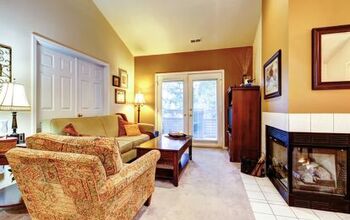


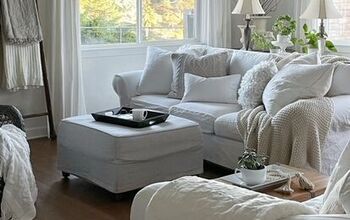
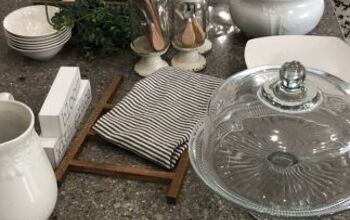

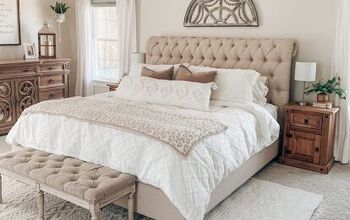







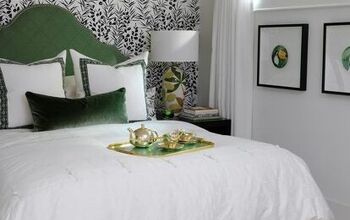


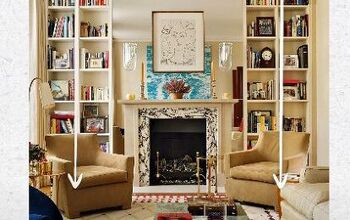
Comments
Join the conversation